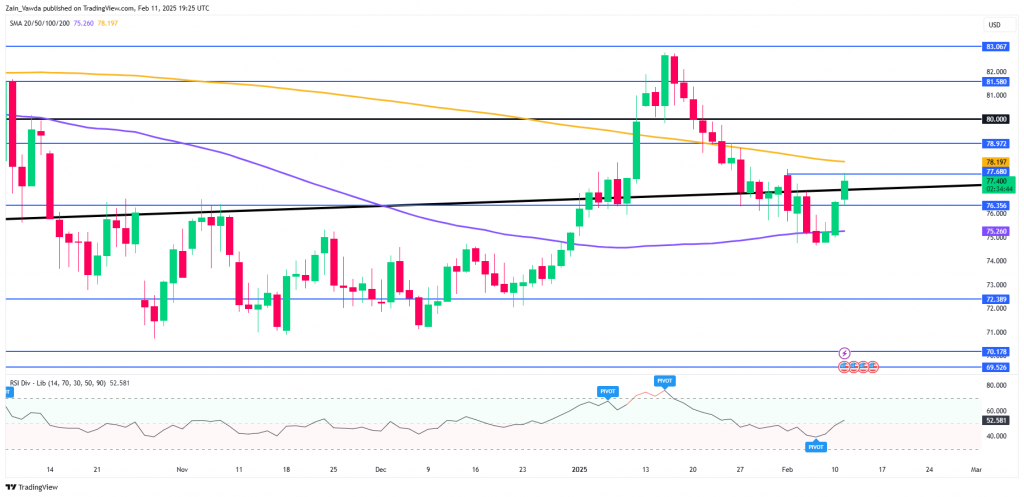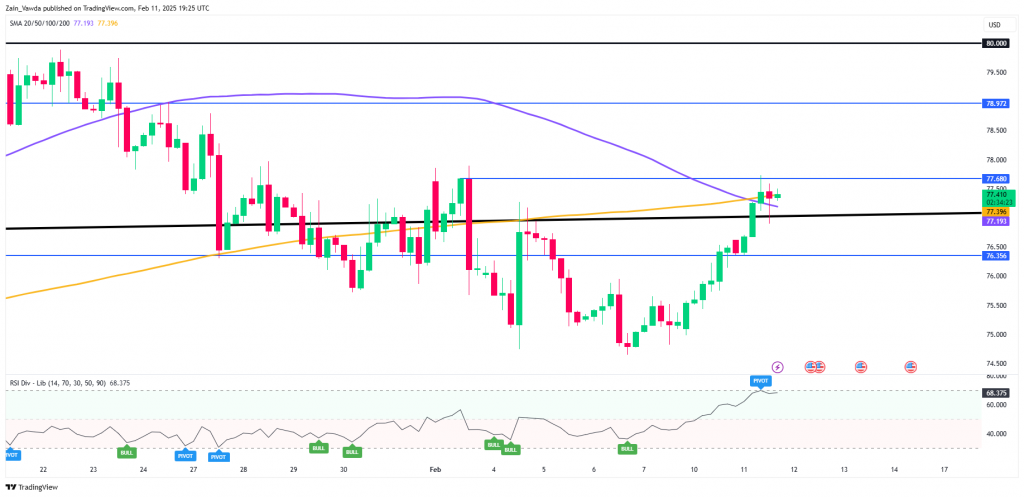Oil prices continued their recovery today running into a key resistance level. The rise in Oil prices this week has surprised me given the trade war fears which have weighed on overall market sentiment.
In a similar vein to what we are seeing with Gold prices where tariffs should be negative, prices continue to rise. It appears that other influences are balancing out this risk. Similarly, with Oil prices, tariffs raise concerns about lower demand, but this is being offset by tighter sanctions on Russian and Iranian Oil supplies.
Russia and Iran Sanctions Raise Supply Concerns
U.S. sanctions on Iranian and Russian oil are causing disruptions and increasing supply concerns. Restrictions on Russian oil shipments to China and India have been affected, impacting tankers, producers, and insurers.
Meanwhile, sanctions on networks shipping Iranian Oil to China have added pressure, reinforcing the U.S.’s tough stance on Iranian exports.
There were also reports in the media today regarding drone attacks on a Russian refinery plant in the Saratov region. The refinery in question is part of Rosneft, called Kreking, one of Russia’s oldest, has been affected. At the same time, Russia launched an overnight attack on Ukraine’s gas and power facilities, targeting its energy infrastructure.
All of these developments are keeping oil prices supported for now.
EIA raises US oil production forecast for 2025
The U.S. Energy Information Administration (EIA) reported that U.S. oil production is expected to grow more this year than previously predicted. By 2025, they estimate production will average 13.59 million barrels per day, slightly higher than the earlier forecast of 13.55 million barrels per day. However, the EIA kept its prediction for U.S. oil and fuel demand unchanged at 20.5 million barrels per day in 2025.
The EIA expects Brent crude prices to average about $74 in 2025 before dropping to $66 in 2026, as production gradually increases and global demand remains weak. OPEC+ production cuts will lower global oil supplies and help keep prices steady through early 2025.
This is something which OPEC + themselves have reiterated many times.
OPEC’s Secretary General Haitham Al Ghais said the group focuses on long-term plans for the global oil market, aiming to keep prices steady. His statement was made at the India Energy Week conference and followed repeated calls from U.S. President Donald Trump for OPEC to increase oil production to bring prices down.
The group is looking to gradually raise output from April, but with the US expected to increase production I still maintain that production cuts will remain in place in Q2 2025.
Inventories Data
US API data will be released in a short while with the EIA inventories data due out tomorrow. Markets are expecting
The API forecast for crude oil stock changes is an increase of 2.8 million barrels, compared to the previous week’s larger build of 5.025 million barrels.
Technical Analysis
This is a follow-up analysis of my prior report “Brent Crude Oil Analysis: Iran Tensions, OPEC+ and Price Trends” published on 4 February 2025.
From a technical analysis standpoint, Brent in enjoying its third successive day of gain but does face a significant handle around the 77.68 with another area of resistance just above at 78.19.
The 14-day RSI has crossed above the 50-handle which is usually a sign that momentum has shifted to favor bulls.
Brent Crude Oil Daily Chart, February 11, 2025

Source: TradingView (click to enlarge)
When dropping down to a four-hour chart, the RSI has tapped into overbought territory which leaves the door open for a short-term pullback.
Supporting a bullish narrative is the fact that price is currently trading above both the 100 and 200-day MAs on a four-hour chart.
If price is to pullback, immediate support rests at 76.35 before support at the psychological 75.00 handle comes into focus.
Brent Crude Oil Four-Hour Chart, February 11, 2025

Source: TradingView (click to enlarge)
Support
- 76.35
- 75.00 (psychological level)
- 73.47
Resistance
- 77.68
- 78.19
- 80.00
